 Your new post is loading...
 Your new post is loading...
In their seminal report, Our Cultural Commonwealth (2006), the American Council of Learned Societies underscored the need for scholars engaged in digital humanities work to leverage their access to data both to expand their audience to the general public and to generate new research questions. "Now is the Future Now?" argues that the progress made in digital humanities toward these goals has depended and will depend not only on digital data, but also on their appropriate curation. The article defines digital humanities, data, so-called Big Data, and digital curation. Next it examines digital curation initiatives in the sciences and in the humanities that occurred before the release of Our Cultural Commonwealth. It then considers and evaluates the digital curation work undertaken in the sciences and in the humanities after the report’s publication. In theory and in practice digital curation has benefited substantially from practices developed and tested first in the natural sciences and subsequently adapted for and extended in the humanities. Finally, the piece explores the future work necessary to facilitate symbiosis between digital curation and digital humanities. Collaboration and cooperation, transcending geographical, disciplinary, and institutional boundaries, data sharing, policies and planning, education and training, sustainability — all remain pressing issues in 2013.
Via Karen Miller

|
Suggested by
Learning Futures
September 14, 2014 6:19 PM
|

|
Suggested by
Learning Futures
September 10, 2014 6:31 PM
|
Tumblr is one of the newer social media apps that allow free sharing of digital media over the web. It is a social channel that has not been left isolated by the educators, as more and more teachers turn to utilizing methods of using this app in their classrooms. If you are a teacher and want to take advantage of this app, here are a few ways in which you can use Tumblr to bring a whole new life to your classroom:

|
Suggested by
Learning Futures
August 30, 2014 4:01 AM
|
“Curation is a life skill and an important part of being digitally literate. Educators need to know how to curate information so they can teach students how they can curate content for research, their interests and passion. As part of this process educators need to encourage students to curate information using techniques that address their own personal learning needs.”

|
Rescooped by
Kim Flintoff
from Digital Curation for Teachers
August 9, 2014 7:38 PM
|
A Japanese news-recommendation app called SmartNews that mines Twitter for topical content has raised $36 million and says it plans to use those funds to expand into North America and take on Flipboard
Via catspyjamasnz

|
Rescooped by
Peter Mellow
from Social Media Classroom
August 2, 2014 4:26 AM
|
"OK…so let me clarify that title. I honestly think textbooks are on their way out…or at least I hope they are. Really it should read “Flipboard as core curation artifact for classrooms” but that wouldn’t have you here reading now would it. "
Via John Evans, Dean Haakenson, Seth Dixon

|
Rescooped by
Peter Mellow
from Digital Curation for Teachers
July 30, 2014 9:16 PM
|

|
Rescooped by
Kim Flintoff
from Digital Curation for Teachers
July 26, 2014 8:57 PM
|

|
Rescooped by
Peter Mellow
from eLearning theories
June 22, 2014 3:57 AM
|
With the vast amount of content that is shared on the Internet, content curation is becoming an essential digital literacy skill for teachers and students.
Via EDTECH@UTRGV, Ezrina Fewings

|
Rescooped by
Kim Flintoff
from APRENDIZAJE
June 13, 2014 8:17 PM
|
We are living in an era of information overload. So much content is shared online that curation is needed as a way to get value out of the information flood. Content curation is the process of shi...
Via Marta Torán

|
Rescooped by
Kim Flintoff
from Content Curation World
June 11, 2014 12:49 AM
|
A digital essay completed by Heather Bailie as part of the assessment requirements of #INF530 Concepts & Practices for a Digital Age.
Via Robin Good

|
Scooped by
Kim Flintoff
May 28, 2014 2:23 AM
|
According to the Content Marketing Institute, original content should be the cornerstone of your content marketing. And curating content can raise your brand awareness and bring more visitors to your website. So how do these two fundamental marketing pieces work together? Very nicely. In terms of content marketing in any industry, how you marry creation and curation could mean your success or failure.
Specifically in education, EdTech consultants, teachers and librarians are doing a great job combining creation and curation to showcase student creativity, school information and thought leadership. We've pulled four worthy examples of users in the EdTech space who exemplify using powerful online tools to master creation and curation consistently. Continue reading →

|
Scooped by
Peter Mellow
May 19, 2014 6:07 PM
|
This is my first post relating to an online course I am taking, Introduction to Digital Curation, which is being hosted by the University College of London. This class looks at what digital curatio...
|

|
Scooped by
Kim Flintoff
September 18, 2014 10:26 PM
|
Content is King: we've heard this sentence so much that for a lot of us it can become a factor of stress and frustration. Are you suffering content FOMO? Relax…

|
Scooped by
Kim Flintoff
September 13, 2014 9:33 PM
|
When I had the 5 I needed I explained to the room that these 5 people were now curators. Each curator would be responsible for one big idea and I wanted them to curate 10 good small ideas around that single big idea. I stressed this wasn’t a brainstorm and that quality of ideas was more valuable than quantity but that I did need 10 ideas for each. The business target for me was to get 50 small ideas. I clearly stated these curators were now in control and the most powerful people in the room – I was implicitly handing the control in this part of the session to them. This is a core part of the 50 big ideas – releasing the control as a L&D professional and letting people get on with it. As a curator I was expecting them to aggregate ideas and conversation, sift and sort ideas, filter out what would work and which would not, collaborate with each other, to work together to achieve the expected result of 50 good small ideas. I specifically asked for curators. If we’re to move from the L&D professional of old to the new role of performance support we need to understand how to curate, market, negotiate and question.
Vogue magazine has been an inspiration to countless fashion addicts and worshippers throughout its decades of existence, but it’s also a source of inspiration to one man: Mike McCue, Flipboard’s ch...
Via Valerie Hill

|
Rescooped by
Kim Flintoff
from Digital Curation for Teachers
August 12, 2014 7:53 PM
|
The slides were used in my talk about digital curation given at the Central NY ASTD Event held at the Everson Museum on 7/31/14
Via catspyjamasnz

|
Rescooped by
Peter Mellow
from Digital Curation for Teachers
August 6, 2014 10:11 PM
|

|
Scooped by
Kim Flintoff
July 31, 2014 7:31 PM
|
A class from Ohio University's social media certificate program called Content Curation skyped with the CEO & Co-Founder of Scoop.it, a social curation site. Students live-tweeted to capture the advice and inspiration from Scoop.it CEO & Co-Founder, uillaume Decugis.

|
Scooped by
Kim Flintoff
July 29, 2014 12:37 AM
|
The concept of digital curation has evolved from its original use. While the digital preservation of artifacts is still the primary domain of digital curation, due to Web 2.0/social media applications it has allowed anyone to easily create a topic centered library online to share with the world. Assets found online can now be quickly collated into a visually appealing web site using freely available tools. This descriptive paper explores the potential use of digital curation within three tertiary institutions.
Ibrar Bhatt writes: "Digital curation therefore is not just about finding relevant material, although that is a significant part of it, but is also about creating a specific and unique experience by utilising the resulting materials which then become contextualised within a new space. A curator, therefore, whether she is a journalist-by-proxy such as Popova or a student completing an assignment in a classroom, not only collects and interprets, but also creates a new experience with it. In this respect, curation is a process of problem solving, re-assembling,re-creating, and stewardship of other people’s writing."
Via Mary Reilley Clark

|
Scooped by
Peter Mellow
June 11, 2014 12:59 AM
|

|
Scooped by
Peter Mellow
May 28, 2014 8:32 PM
|
The concept of digital curation has evolved from its original use. While the digital preservation of artifacts is still the primary domain of digital curation, due to Web 2.0/social media applications it has allowed anyone to easily create a topic centered library online to share with the world. Assets found online can now be quickly collated into a visually appealing web site using freely available tools. This descriptive paper explores the potential use of digital curation within three tertiary institutions.

|
Rescooped by
Peter Mellow
from Digital Curation for Teachers
May 22, 2014 10:37 PM
|
Content curation is not just collecting, it's also sharing. And whatever our motivation, we curate content to have an impact so understanding where our traffic comes from is important. During our first 2 years of existence, the Scoop.it users have published more than 50M pieces of content attracting more than 100M unique visitors so we've been in a great position to observe not only where this traffic came from but also what best practices had the strongest influence on it. So we’ve analyzed all the content curated, published and shared through Scoop.it. This post is about sharing these data and learnings so you can be more effective with your content curation. Continue reading →
Via catspyjamasnz
|



 Your new post is loading...
Your new post is loading...
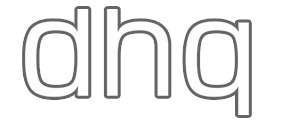

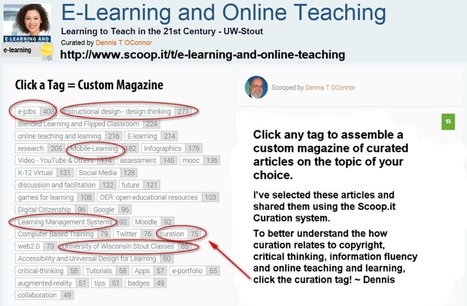


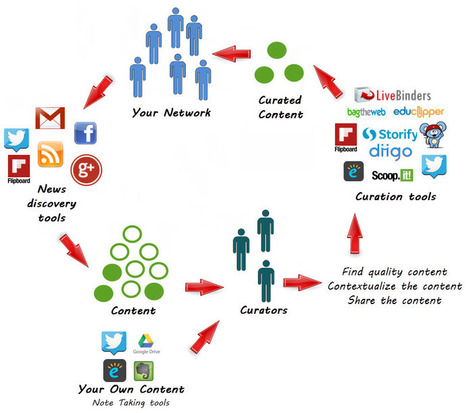





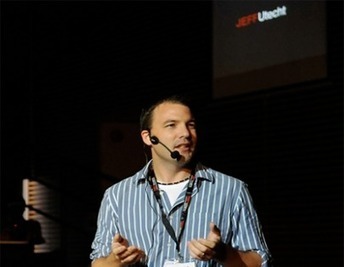



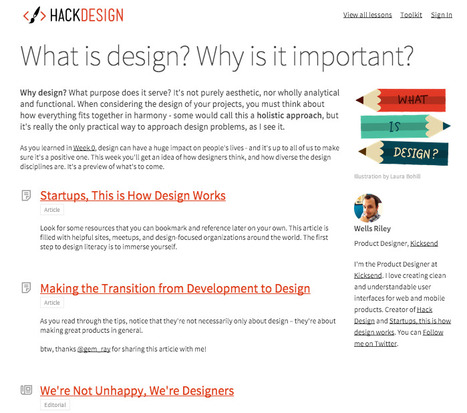









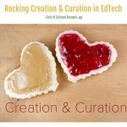










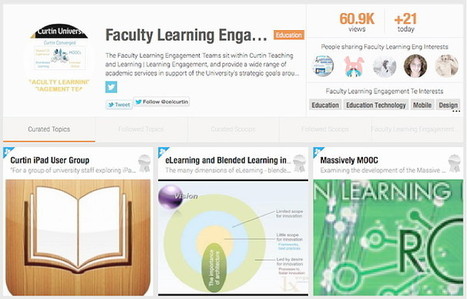




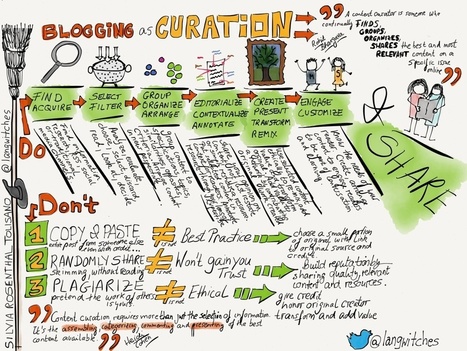


![Curation as a tool for teaching and learning — Storify [Slideshow] | Digital Curation in Education | Scoop.it](https://img.scoop.it/tZEptwwd0zkW1siya8QTiTl72eJkfbmt4t8yenImKBVvK0kTmF0xjctABnaLJIm9)






One for the attendees of 'Getting Started in Digital Preservation' on Fri